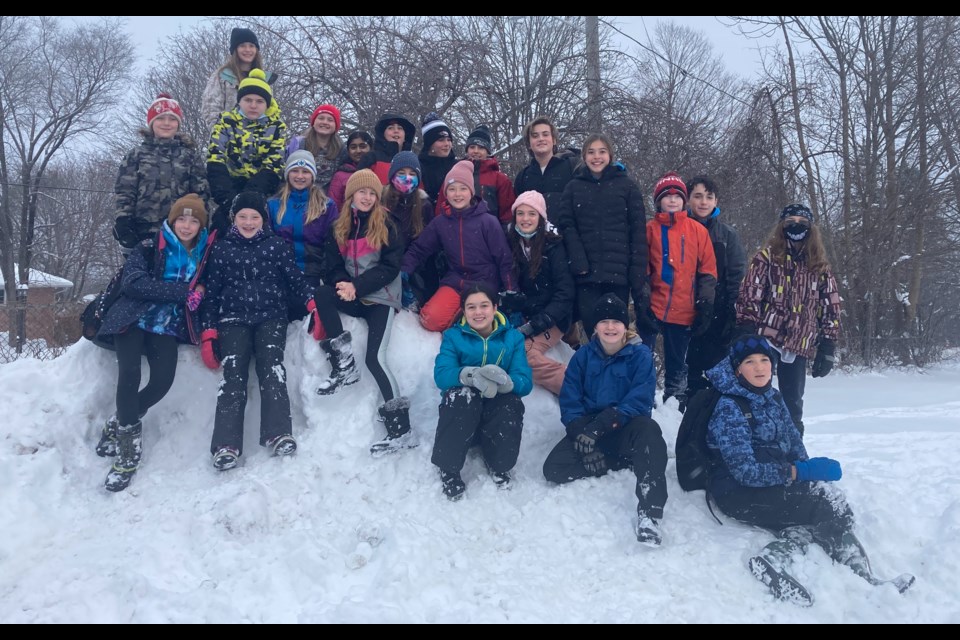In the eyes of Grade 7 student Elora DeWolfsmith, the scariest part about Halloween shouldn’t be the amount of plastic waste the occasion generates.
“(Trick-or-treating) is supposed to be a fun event ... and it’s just hard if you have to be worried about all the waste you produce,” she says.
That’s why in early fall, DeWolfsmith proposed an idea to her teacher to mail the Halloween candy wrappers her class collected back to their manufacturers along with persuasive letters.
Her teacher at Regent Park Public School, Erin Ducharme, describes her reaction as “proud but not surprised,” as she knows how driven DeWolfsmith is in tackling sustainability issues.
“I was very thrilled that she came up with something that was so detailed. She had a plan in place to hopefully inspire some change,” says Ducharme.
It didn’t take long for the file boxes to fill with wrappers. By mid-November, they had collected four such boxes worth of compressed Halloween candy wrappers to send back.
DeWolfsmith first had the idea when she was thinking about specific times of year that generate a lot of waste.
“I was thinking, ‘There’s so much wrappers, I don’t know what to do about it,’” DeWolfsmith says.
She decided the best way to affect change would be by persuading the manufacturers to change their packaging and that showing them the amount of waste produced would make her point more convincing.
All the students were really engaged in the project and excited to help make a positive change, says Ducharme.
Once they had collected the wrappers, the class sorted them by brand — most products being from Nestle, Mars, Frito Lay or Mondelez — and then how the waste would be disposed of — in the recycle, compost or garbage.
The students noticed that very few products had recyclable or compostable packaging — Smarties, Pringles and the occasional Milk Duds or Nerds package were essentially the only ones.
Some packaging included paper, but the plastic coating around it meant those wrappers were ultimately destined for the garbage.
“They should really make it possible to recycle their stuff instead of putting plastic and wax (on the outside),” says student Avery Telford. “M&M’s, I’m pretty sure you can tell that they’re trying because it's paper with a coating.”
No brand seemed to have a better track record, either. Despite Nestle’s recyclable Smarties packaging, other products by Nestle like KitKats and Coffee Crisp were wrapped in plastic. DeWolfsmith pointed out that chip packaging seems to have the worst snack-to-packaging ratio as well.
“It made me feel really sad to see all the plastic there. It was also kind of interesting, though, to see how real it was,” says Grade 7 student Lila Bolden Bruce.
Ducharme turned the project into two assignments for students: a persuasive letter writing assignment in pairs which had students outline the harms of plastic waste and potential solutions, and a powerpoint presentation in small groups so the students could share their project with the rest of the school.
As a class, Ducharme and her students estimated, based on the waste their class collected, that all classes at Regent Park combined would produce enough wrappers to fill 60 file boxes. All of the schools in Orillia would fill 1,260 file boxes, they estimate.
Ducharme says more than the presentations even, when other teachers would come into her classroom they would be shocked to see how much waste one class worth of students produced in Halloween candy alone.
“That’s kind of an eye-opener for everybody,” says Ducharme. “We live in a society where we throw things in the garbage and it’s magically taken away. It disappears and we don’t even see it anymore.
Ducharme became interested in sustainability when her family resorted to drinking single-use water bottles for a while due to concerns over the quality of their well water.
Noticing how quickly the piles of empty bottles filled up at home, and in her classroom from students as well, she tried to make swaps in her life to reduce her waste.
In recent years, she has given her class projects that require them to research the issue of pollution, and shown documentaries like One Plastic Ocean to her students.
DeWolfsmith says her teacher’s lessons on plastic pollution have helped her recognize the issue and take steps in her own life to reduce waste.
Outside of class, DeWolfsmith and Lila spent a PA day in November picking up trash from their schoolyard. They plan to collect garbage from the yard again this spring when the snow melts.
Once the students put the final touches on their letters, Ducharme will mail the boxes and letters out.
While DeWolfsmith recognizes it might take some time for companies to switch to eco-friendly packaging, she hopes the class project helps motivate change.
“I hope the letters will help convince them a little bit and hopefully they’ll try in the following years so that kids in the future don’t have to worry about going trick-or-treating,” she says.
